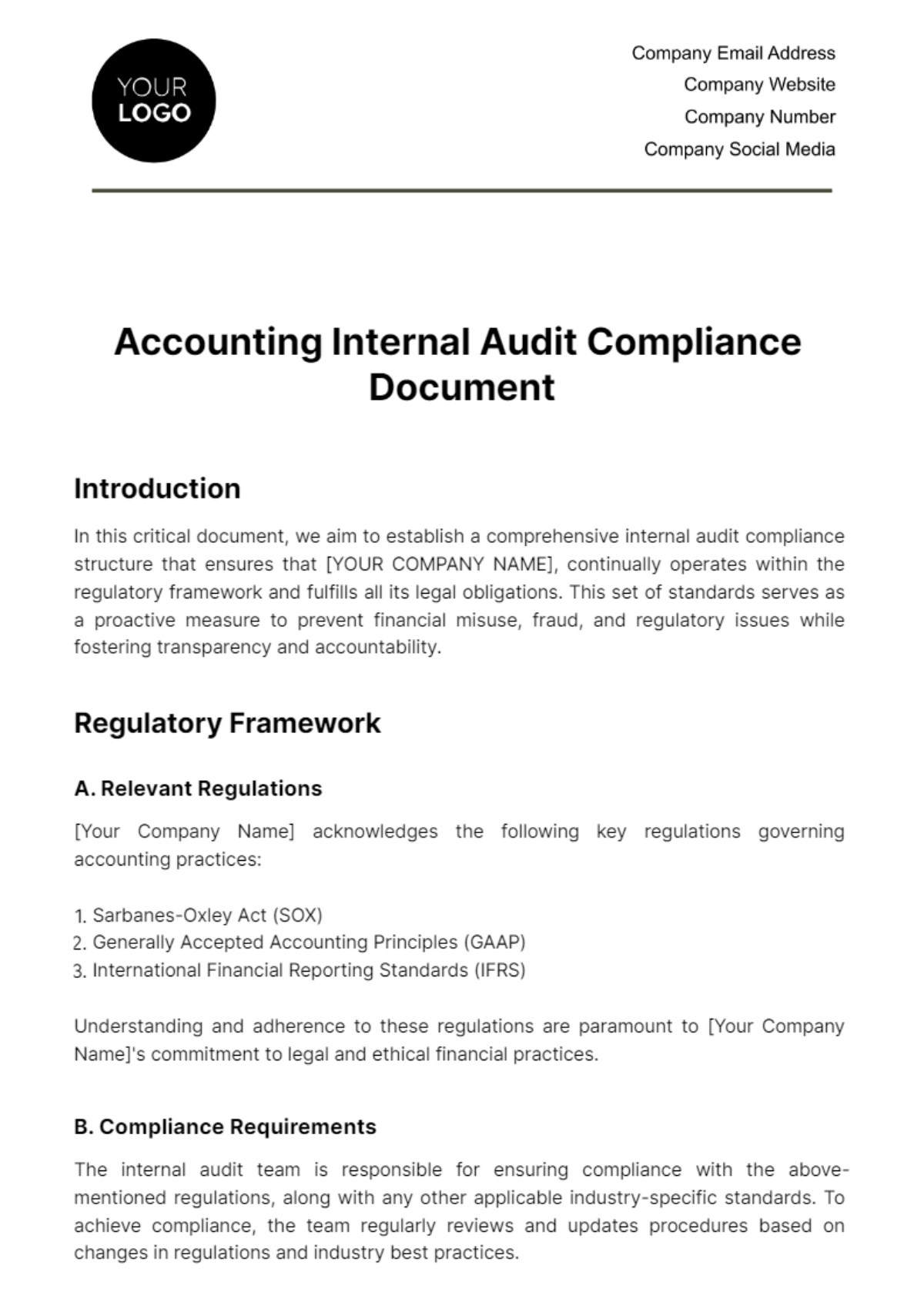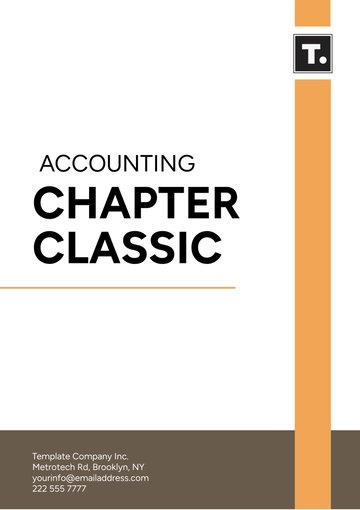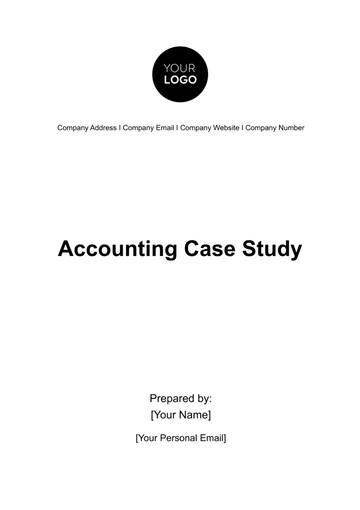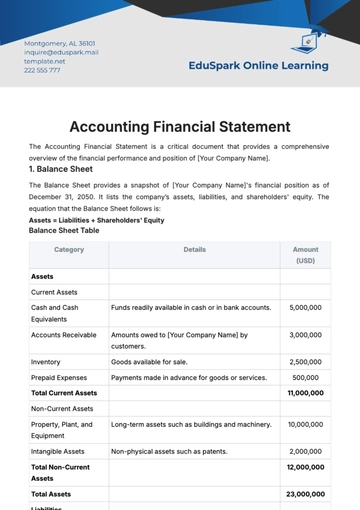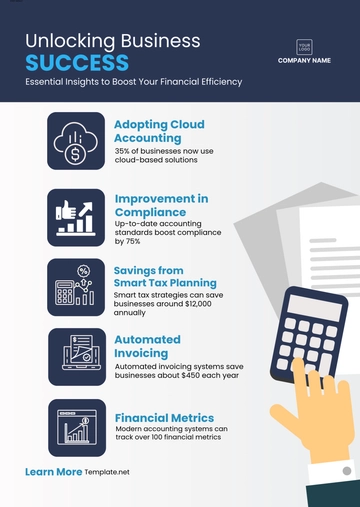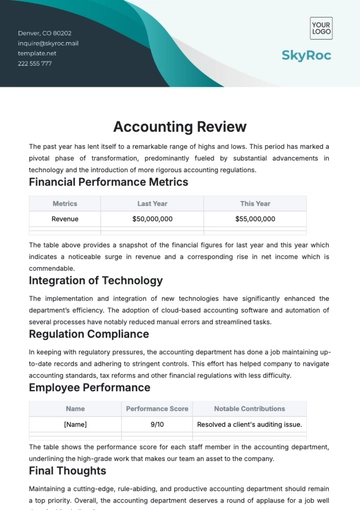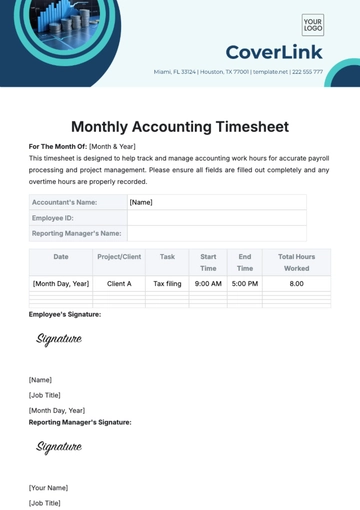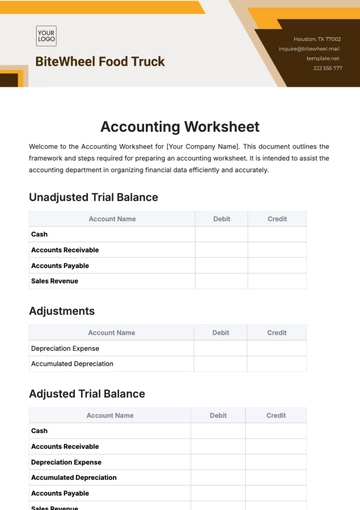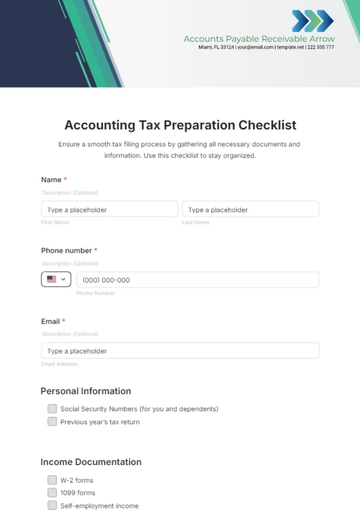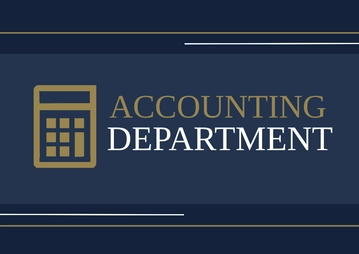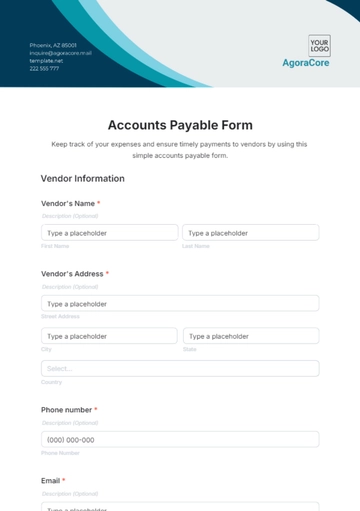Accounting Internal Audit Compliance Document
Introduction
In this critical document, we aim to establish a comprehensive internal audit compliance structure that ensures that [YOUR COMPANY NAME], continually operates within the regulatory framework and fulfills all its legal obligations. This set of standards serves as a proactive measure to prevent financial misuse, fraud, and regulatory issues while fostering transparency and accountability.
Regulatory Framework
A. Relevant Regulations
[Your Company Name] acknowledges the following key regulations governing accounting practices:
Sarbanes-Oxley Act (SOX)
Generally Accepted Accounting Principles (GAAP)
International Financial Reporting Standards (IFRS)
Understanding and adherence to these regulations are paramount to [Your Company Name]'s commitment to legal and ethical financial practices.
B. Compliance Requirements
The internal audit team is responsible for ensuring compliance with the above-mentioned regulations, along with any other applicable industry-specific standards. To achieve compliance, the team regularly reviews and updates procedures based on changes in regulations and industry best practices.
Internal Audit Structure
A. Internal Audit Team
[Your Company Name] has established an Internal Audit Team comprising qualified professionals with expertise in accounting, finance, and compliance.
The team is carefully selected to ensure a diverse skill set, promoting a holistic approach to internal auditing.
B. Roles and Responsibilities
Internal Audit Manager: Oversees the entire internal audit process, including risk assessment, planning, execution, and reporting.
Audit Team Members: Conduct detailed audits, document findings, and recommend corrective actions.
Roles and responsibilities are clearly defined to ensure accountability and effective collaboration within the Internal Audit Team.
C. Reporting Structure
The Internal Audit Team reports directly to [Your Name], [Your Position], ensuring independence and objectivity in the auditing process. Direct reporting promotes transparency and prevents undue influence on the audit process.
Audit Procedures
A. Risk Assessment
Before each audit, a thorough risk assessment is conducted to identify potential areas of non-compliance and financial risk. The risk assessment serves as a foundation for designing audit plans that target high-priority areas.
B. Audit Planning
A detailed audit plan is developed, outlining the scope, objectives, and methodologies to be employed during the audit. The audit plan serves as a roadmap, ensuring that audits are conducted systematically and efficiently.
C. Execution of Audits
The audit team performs fieldwork, testing controls, and collecting evidence to assess compliance with regulations and internal policies. Execution involves meticulous examination, emphasizing attention to detail and thorough documentation.
D. Documentation
Comprehensive documentation of audit procedures, findings, and recommendations is maintained for future reference and transparency. Thorough documentation ensures a clear trail of audit activities and provides a basis for accountability and future analysis.
Control Framework
A. Segregation of Duties
[Your Company Name] implements a robust segregation of duties framework to prevent conflicts of interest and ensure accountability in financial processes. Segregation of duties is crucial for preventing fraud and errors, contributing to a robust internal control environment.
B. Access Controls
Strict access controls are in place to limit unauthorized access to financial systems and sensitive data. Access controls safeguard against unauthorized access, protecting the confidentiality and integrity of financial information.
C. Transaction Monitoring
Regular monitoring of financial transactions helps detect anomalies and potential fraudulent activities. Continuous monitoring enhances the ability to identify irregularities promptly, reducing the risk of financial misconduct.
D. Financial Reporting Controls
Stringent controls are in place to ensure the accuracy and reliability of financial reports, aligning with GAAP and IFRS.
Financial reporting controls are designed to instill confidence in the accuracy of financial statements and disclosures.
Testing and Validation
A. Sampling Methods
Audit testing involves the use of statistically valid sampling methods to assess the accuracy and reliability of financial data. Sampling methods are carefully selected to provide a representative view of the overall financial landscape.
B. Data Validation
Data used in audits is validated for accuracy, completeness, and relevance to ensure the reliability of audit findings. Validation processes ensure that the data under examination is trustworthy, enhancing the credibility of audit outcomes.
C. Evidence Collection
The audit team systematically collects relevant evidence to support audit conclusions and recommendations. Evidence collection is meticulous, ensuring that findings are substantiated and can withstand scrutiny.
Remediation Process
A. Issue Identification
Any non-compliance or weaknesses identified during audits are documented and categorized based on severity. Identification of issues allows for a targeted and prioritized approach to remediation.
B. Corrective Actions
A structured remediation process is initiated to address identified issues, including the development and implementation of corrective action plans. Corrective actions are designed not only to address immediate concerns but also to prevent recurrence.
C. Follow-Up Procedures
The Internal Audit Team conducts follow-up audits to ensure the effectiveness of corrective actions and compliance with recommendations. Follow-up procedures validate the success of corrective actions, closing the loop on the remediation process.
Conclusion
The success of our company lies not just in achieving our business goals, but also in how we achieve them. As such, this Accounting Internal Audit Compliance Document serves as a roadmap to guide [YOUR COMPANY NAME] in maintaining the highest standards of compliance, driving our mission forward with integrity, transparency, and accountability.
Accounting Templates @Template.net
